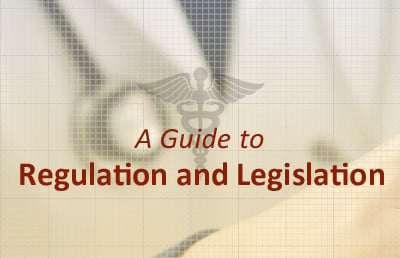
CliftonLarsonAllen’s Regulatory Advisor offers a concise summary of the key provisions 2014 Proposed Rule for Inpatient Prospective Payment System.
On April 26, 2013, the Centers for Medicare and Medicaid Services (CMS) issued a proposed rule that would update payment rates for approximately 3,400 acute care hospitals and about 440 long-term care acute hospitals (LTCHs) across the country. The proposed rule also continues to push the connection between quality, patient safety, and patient satisfaction to reimbursement.
“Proposed rules are written to be comprehensive, not concise,” says Rob Schile, a health care partner at CliftonLarsonAllen. “It takes hours to read, digest, and prioritize the information most relevant to hospitals. Our Regulatory Advisor compiles the pertinent pieces in one place.”
CliftonLarsonAllen’s Regulatory Advisor offers a summary of the key provisions of the Proposed Rule for IP PPS and translates some of the more complex issues into understandable terms. For instance, the complex calculations involved in disproportionate share payments (DSH) are just one of the many issues hospitals need to understand so they can prepare for the future.
How expansion of coverage will impact disproportionate share (DSH) payments
A critical focus of the Affordable Care Act (ACA) was expansion of coverage through the creation of health insurance exchanges and the expansion of Medicaid, which is scheduled to start January 1, 2014. In accordance with this expansion, the ACA outlined a framework for how DSH payments to eligible hospitals will be reduced to coincide with reductions of uninsured patients.
In its Proposed Fiscal Year 2014 Inpatient Prospective Payment System Update, CMS outlined this adjustment methodology and its plans to implement it.
“Understanding the formula will be critical to hospitals who receive DSH payments because there will be both short-term and long-term cash flow implications, and hospitals will experience increased settlement risks related to DSH payments,” says Schile.
DSH payment reduction
Beginning with discharge on or after October 1, 2013, eligible hospitals will have their DSH payments reduced to 25 percent of the payment they would have normally received under current statutory formulas. CMS refers to this payment as the “empirically justified payment.”
The remaining 75 percent will be reduced to reflect the change in the percentage of individuals who are uninsured and under age 65, then redistributed to hospitals in the form of an additional DSH payment. The additional payment will be based on each hospital’s amount of uncompensated care for a specific period relative to the total uncompensated care by all hospitals during that same period. Prior to distribution, the DSH pool amount will be further reduced by an ACA mandated additional .1 percent for 2014.
Formula guiding additional DSH payments
Each hospital’s additional DSH payment will be the product of three factors, which are outlined as follows:
Factor one: The CMS Office of Actuary estimated the total DSH payments for all hospitals, minus 25 percent that will be distributed as “empirically justified” payments. According to CMS, the total estimated DSH payments for 2014 equate to approximately $12.3 billion.
Factor two: This factor will identify the change in uninsured from a baseline time period to 2013, which will represent the most recently available estimate prior to coverage expansion. The data will be calculated using the Congressional Budget Office (CBO) estimate of the uninsured population from 2010 of 18 percent as the baseline, compared to its most recent estimate from February 2013 of 16 percent.
Factor three: The final factor used in the calculation will reflect the hospital’s specific portion of uncompensated care as a percentage of uncompensated care provided by all hospitals. CMS discusses various data points that could be used in this calculation, including the data reported on Worksheet S-10 of the Medicare Cost Reports. The most recently available data for uncompensated care in the Medicare reports would be from those filed on or after May 1, 2010, which represents the initial year of this data being collected as a result of the electronic health record incentive program. Due to concerns of accuracy in the data, CMS proposed to use the utilization of insured patients defined by Medicaid days, plus the inpatient days of Medicare SSI patients, to determine factor three. This data will come from the most recently available Medicare cost reports, which are from the time period of 2010 – 2011. As a result, each hospital’s specific uncompensated care ratio will be provided by CMS.
Impact to DSH hospitals
The impact on reimbursement to individual hospitals will vary based on all factors included in the calculation. But the fact is, hospitals are facing a barrage of changes to their reimbursement streams, and modification to DSH payments is just one more added to the list. Understanding the potential impact is of vital importance to both short-range and long-range planning. Then hospital leadership has to understand, prioritize, and address all the other changes as well.
Download the Regulatory Advisor.
